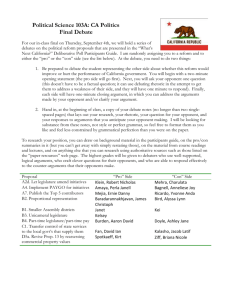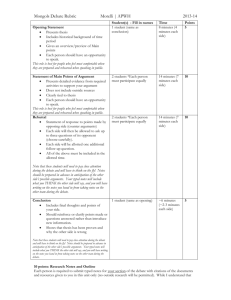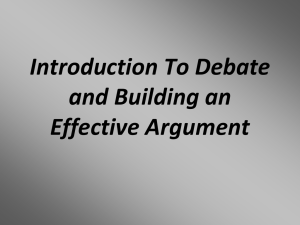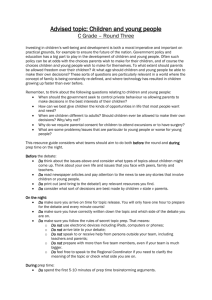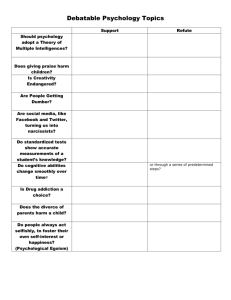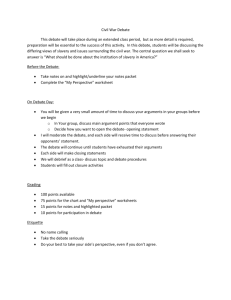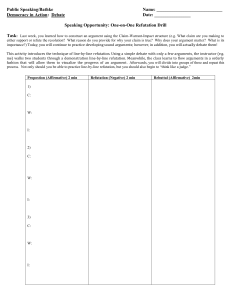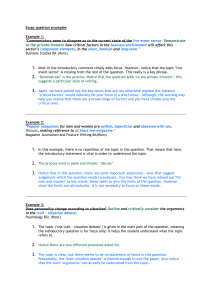Introduction to Debate Jargon
advertisement
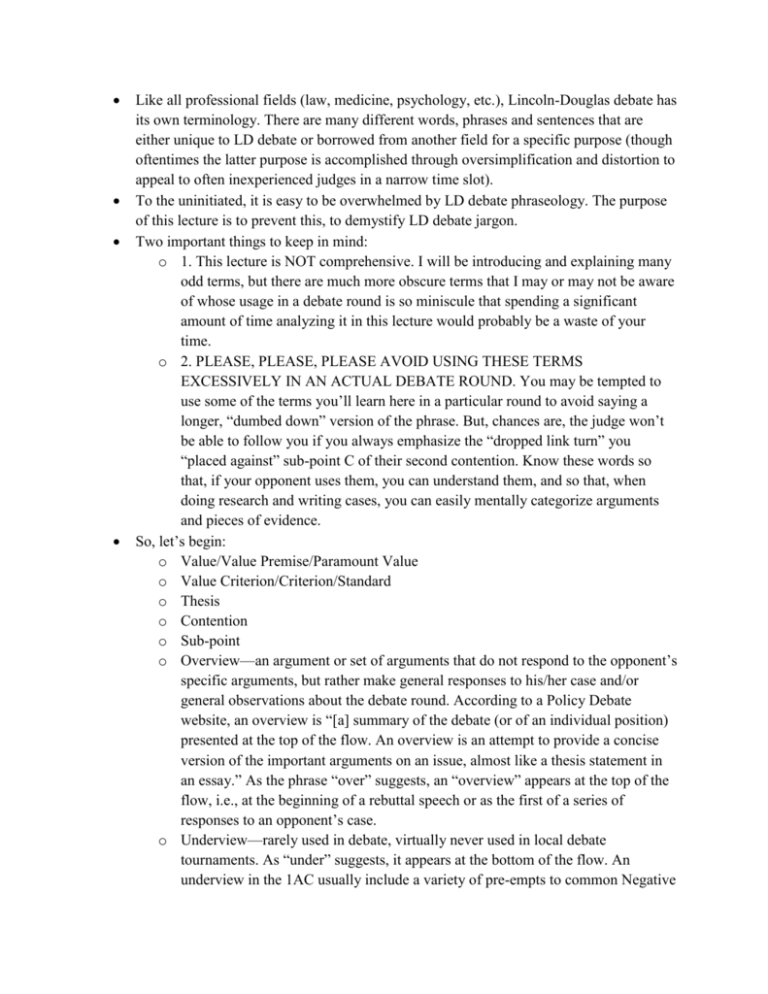
Like all professional fields (law, medicine, psychology, etc.), Lincoln-Douglas debate has its own terminology. There are many different words, phrases and sentences that are either unique to LD debate or borrowed from another field for a specific purpose (though oftentimes the latter purpose is accomplished through oversimplification and distortion to appeal to often inexperienced judges in a narrow time slot). To the uninitiated, it is easy to be overwhelmed by LD debate phraseology. The purpose of this lecture is to prevent this, to demystify LD debate jargon. Two important things to keep in mind: o 1. This lecture is NOT comprehensive. I will be introducing and explaining many odd terms, but there are much more obscure terms that I may or may not be aware of whose usage in a debate round is so miniscule that spending a significant amount of time analyzing it in this lecture would probably be a waste of your time. o 2. PLEASE, PLEASE, PLEASE AVOID USING THESE TERMS EXCESSIVELY IN AN ACTUAL DEBATE ROUND. You may be tempted to use some of the terms you’ll learn here in a particular round to avoid saying a longer, “dumbed down” version of the phrase. But, chances are, the judge won’t be able to follow you if you always emphasize the “dropped link turn” you “placed against” sub-point C of their second contention. Know these words so that, if your opponent uses them, you can understand them, and so that, when doing research and writing cases, you can easily mentally categorize arguments and pieces of evidence. So, let’s begin: o Value/Value Premise/Paramount Value o Value Criterion/Criterion/Standard o Thesis o Contention o Sub-point o Overview—an argument or set of arguments that do not respond to the opponent’s specific arguments, but rather make general responses to his/her case and/or general observations about the debate round. According to a Policy Debate website, an overview is “[a] summary of the debate (or of an individual position) presented at the top of the flow. An overview is an attempt to provide a concise version of the important arguments on an issue, almost like a thesis statement in an essay.” As the phrase “over” suggests, an “overview” appears at the top of the flow, i.e., at the beginning of a rebuttal speech or as the first of a series of responses to an opponent’s case. o Underview—rarely used in debate, virtually never used in local debate tournaments. As “under” suggests, it appears at the bottom of the flow. An underview in the 1AC usually include a variety of pre-empts to common Negative o o o o o o o o o o o o o o o o o o o o o o o o o o o o o arguments that have not relevance to the Affirmative’s actual positions but can become functional if the Negative makes arguments to which the Underview applies. Grouping Empirical versus analytical evidence Cards Spreading Claim/Warrant/Impact model Offense/Defense Link Turn Impact Turn (often counterintuitive, I recommend not using this tactic) Impact Defense Non-unique—an argument/impact/result that occurs in the both the Affirmative and Negative worlds. Voting Issues/Voters Crystallization Framework Substance Flow—the “flow” consists of the paper on which debaters take notes of their arguments and opponent’s arguments (this is called “flow paper”). An argument “on the flow” is an argument that, literally, is written down on those pieces of paper. Lay vs. Circuit/Flow Status quo—the existing state of things; the present system Extensions Interpretation Burden Observation Drop Link/linking Weighing Cross-apply Philosophical vs. pragmatic Extending through Ink Double-bind Deontological vs. teleological


